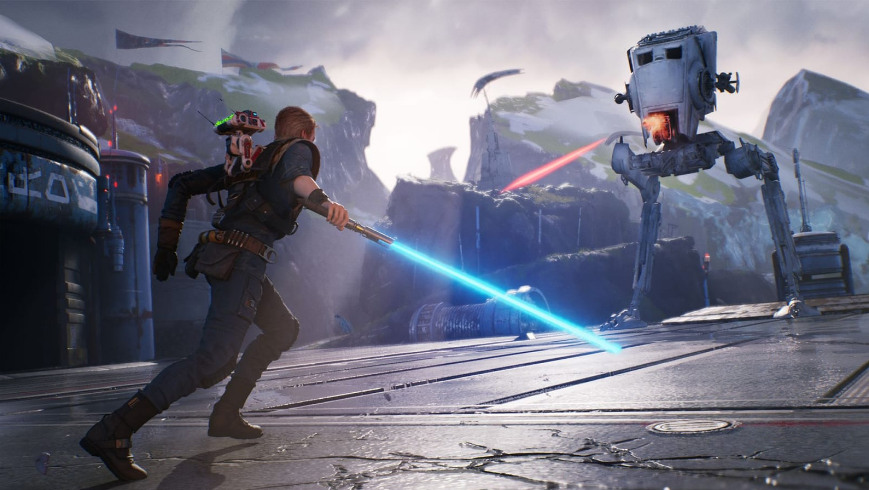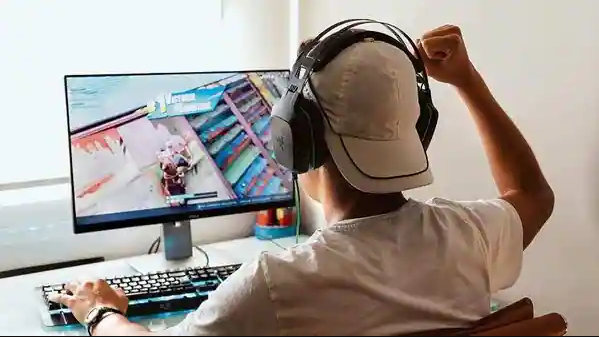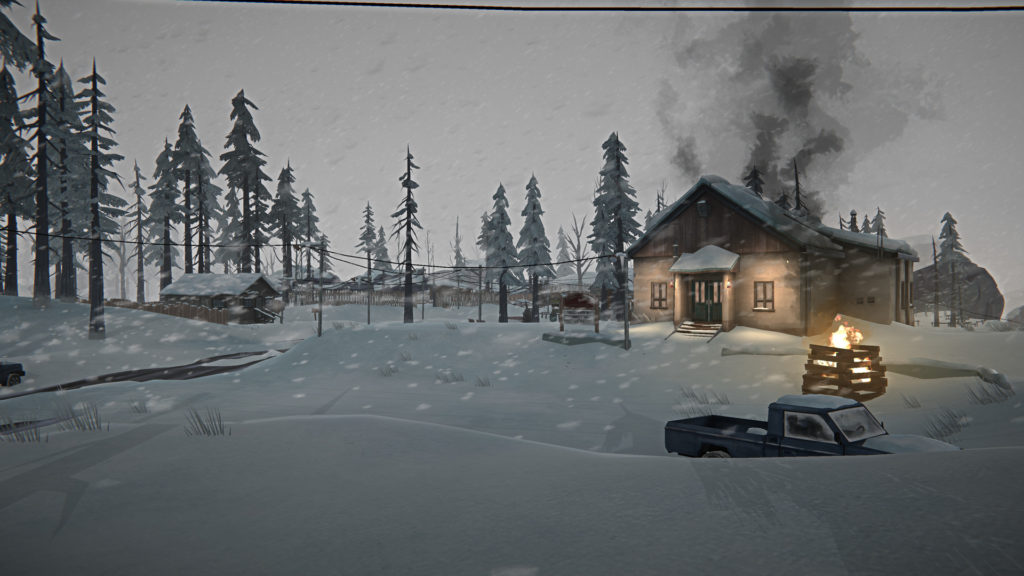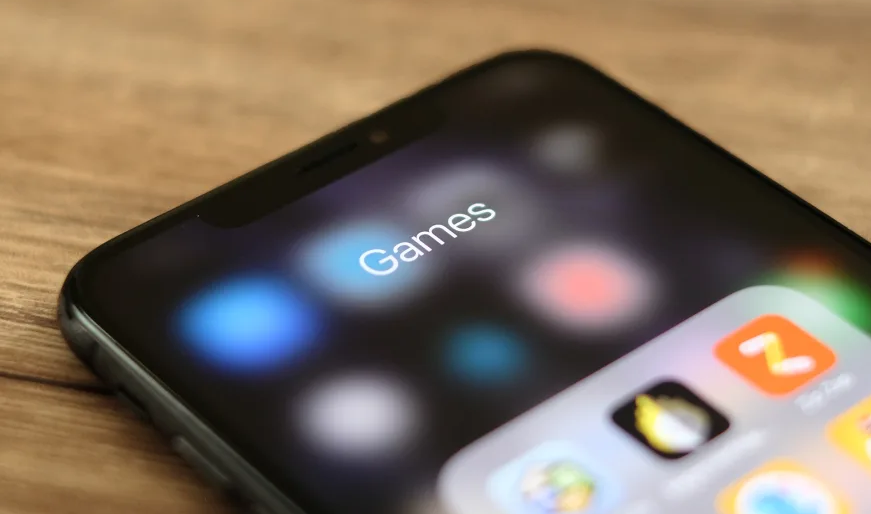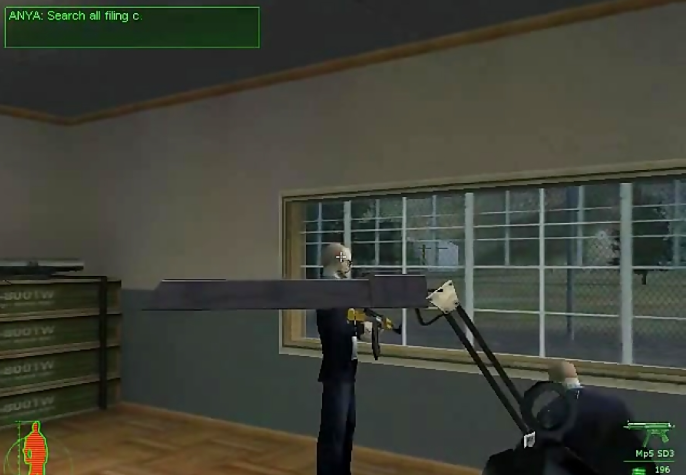The end of 2019 is near, so it’s time for us to take stock of this year’s games. And it’s been quite a year – not quite as high as 2017, of course, but still, more than we can reasonably play here at Engadget between all the gadgets we review and the events we attend. So instead of announcing a list of winners, let’s tell you about the titles that won our hearts and minds this year, about the games of 2019 that made our days a little better and will be remembered as we go around the corner into the next decade and beyond
Astral Chain
Fire Sign: Three Houses is the best game of the year. But a colleague has already written about this, and I will also choose another favorite: The astral chain from Platinum Games. I’ve been on the fence for a couple of hours since the day I came out with the first trailer to play it through. All of this felt a little too obvious and quickly became an occasional repeat of the Platinum Games title. I should not worry: this is mechanically one of the more original games that the developer has created in recent years.
In a future where humanity is threatened by a creature called Chimera, you play as an officer in a special task force deployed to fight attacks from other worlds. You will investigate the disorder and then enter the astral plane to fight against various beasts. As the game progresses, you can count several special chimeras and then summon them to fight for yourself. Competitions are held where you simultaneously control your character and legion to cope with the waves of crowds and large, challenging enemies. They are tied to their army with straps (or an astrological chain), to which they can also tie enemies. You will also have to use your legion to solve crimes, cross the environment and avoid obstacles, as each has a unique feature, such as the ability to move large objects, track scents, or fire arrows.
I have heard many people say that the heavenly chain is usually visible. Although it leans heavily on a distinctive anime-inspired 3D style we have seen in many Japanese games over the past decade, the characters and atmosphere have made me feel unique. If anything, the” future policeman ” aesthetics was more reminiscent of the titles of the 90s, such as Burning Rangers, than contemporary sports. (I would like to apologize for the opportunity that I constantly promoted my colleagues weekly for the restart of Burning Rangers after the release of the cosmic chain. )
Astral Chain adheres closely to a loop of detective work, platform puzzles, and fights – a little too closely if I’m critical – the game is divided into cases that serve as chapters. The story starts quite well, but quickly evolves into a mashup of various anime tropes, including several story beats straight out of the Neon Genesis Evangelion. This minute-long gameplay makes me repeatedly return: the battle is dynamic and dynamic enough for you to go through the campaign and beyond (about 20 hours). There is also a ranking system and some challenging endgame content to keep you engaged.
Is Astral China reaching the heights of Nier: Automata, the last Platingames title I picked for the game of the year? No, not at all, but his fights and atmosphere hugely impact the sport, which is probably my favorite of this generation. I’m not sure if it will go down in history as great, but even as a remake of one of my favorite series (Fire Emblem and Pokémon) updates and my favorite games (Link Awakening) in a year, Astral China still stands out.
Untitled Goose Game
Okay, let’s get this out of the way: HONK. HUP, HUP, HUP. : flapping your wings, stealing your glasses:
Untitled Goose Game is more than just a game. It’s a real phenomenon. Even if you haven’t played it yet, you’ve probably come across one of the many memes and thought pieces released after its release. It’s the breakout hit of 2019. But is it a good game?
HONK. (Yes.)
The graphics are not striking, the music is just Debussy, and the goose handles like a dump truck. But all these things combine into one package, which is extraordinarily charming and cheerful. Nasty cheerful anyway. One of the game’s charms is how simple and universal the concept is: geese are assholes. We’ve all been terrorized by this big waterfowl at some point, so it’s a catharsis to take on the role of such a one. “I’m the goose now. HONK.”
And it’s a challenge. Who would have thought that a goose would be the star of a stealth game? But here we are. It is also painfully aware of what kind of game it is, which is why you will have to hide in a box at some point. HONK.
Then there’s the end. I bet you didn’t think that you could be surprised by a game where your goal is to steal things like slippers and put on statues, but anything that makes me slap my forehead and exclaim, “of course,” will be remembered by me and my heart for years.
Sekiro: Shadows Die Twice
There is a moment in Sekiro: Shadows Die Twice that comes at a different time for everyone who plays him. It’s the moment when the game’s combat mechanics finally clicks. They forget everything they learned in previous FromSoftware titles like Dark Souls and Bloodborne and approach Sekiro on his terms.
That moment came when I finally defeated one of Sekiro’s early bosses, a fearsome samurai lord named Genichiro Ashina. It took me almost two days to get him down, but when I did, I felt like I had climbed a mountain.
Many games make their way and achieve the same things as Sekiro. But not so easy or confident. This sense of achievement you get when you master a game’s systems is something on which FromSoftware has built its reputation. That’s one of the reasons why so many people love the studio’s games. And yet it feels different how Sekiro delivers this moment than any other game from the last decade.
The gameplay is different, and the narrative stakes are clearly set. They are trying to save the community and the adopted son of the game’s protagonist. It feels personal and human. It’s a small thing, but the humanity of Sekiro resonated with me and made it one of the most entertaining games I’ve played this year.
Fire Emblem: Three Houses
I knew when Fire Emblem: Three Houses was announced that I would buy a switch for it. I’ve played almost every DS and 3DS game in the franchise, and I definitely wouldn’t miss the latest entry. But while I loved and enjoyed every one of them, a big part of the reason I play Fire Emblem is to fill the Suikoden-shaped hole in my heart – and three houses came closest to being patched.
Suikoden, a Japanese RPG series from Konami, features turn-based and strategic battles similar to Fire Emblems. Suikoden 2 was the first game I played in the series, and I fell in love with the complex characters, rich lore, and plot that made me think about the atrocities of war and the morality of “The end justifies the means” as a young teenager. Unfortunately, with Konami’s decision to focus on mobile and pachinko games, we will probably never see another entry again: Suikoden V, the last game in the series, was released in 2006.
This brings us back to Fire Emblem. While I was enjoying the new mechanics introduced in Awakening and spent 300 hours playing fates – half of which I enjoyed and half of which I mindlessly ground – no one could scratch that Suikoden itch. However, three houses probably did this because it contains more traditional RPG elements than its predecessors.
It also has more specific similarities. As in Suikoden, you can explore your base and recruit characters outside the battlefield by fulfilling certain conditions. The battalions in the game, a new feature introduced in Three Houses, also use attacks and formations similar to Suikoden’s war units for their strategy battles.
Don’t get me wrong: I would still pick Three Houses as my favorite game for 2019, even if I wasn’t a desperate Suikoden fan. It has a captivating plot and what I think is the most memorable cast of characters in Fire Emblem. While things tend to repeat in the first half, it still has a good replay value, especially considering that it is sold and packaged as a single game. Fates, if you remember, was sold as three separate games. However, the fact that it brings back memories of a series I grew up with immediately gave me an emotional connection and increased my joy.
Judgment
I love the Yakuza franchise, but after seven main entries and a handful of excellent remasters, I needed a break. The Japanese developer Ryu ga Gotoku (RGG) studio felt the same. It made the detective verdict (titled Judge Eyes in Japan) before moving on to Yakuza: Like a Dragon. Surprisingly, the verdict is not a big deviation from the proven and largely popular Yakuza formula. The game is still set in Kamurocho, and the murderous puzzle contains many Japanese crime bosses. However, the hero – a lawyer turned private investigator named Takayuki Yagami – and his crime-solving techniques change the experience in a small but welcome way.
He often pursues suspects to find out who they are working with or where a case-critical hiding place exists. Some targets will also discover Yagami and flee, forcing the leather-jacketed hero to go hunting in a simplified pursuit inspired by car racers. There are also quieter moments that put the game in a first-person perspective and force you to search the surroundings for clues. It’s not the most difficult task – move the camera enough, and Yagami will highlight everything interesting – but it’s a welcome break from the bombastic fistfight.
However, the best part of the verdict is its history. Yagami’s search for “the Mole,” an obvious assassin who claws for his enemies and then digs into the darkness again, is a captivating journey full of surprising, logical, and satisfying twists and turns. It’s divided into 13 chapters that feel like episodes of a prestige series on HBO or Netflix. The opening sequence feels like a mashup of Naruto and True Detective. I’ve never had a problem writing Yakuza – some of the games have brilliant stories – but Judgement takes RGG Studio’s storytelling skills to a new level.
If you want to take a break from the central puzzle, Kamurocho has many optional side missions to complete. Like the Yakuza series, they’re often wacky and surprisingly heartwarming – a subtle reminder that Yagami’s story, while exciting, is just one of many taking place across the city. There are also several shops and restaurants to explore, as well as various mini-games to master, including Shogi (Japanese chess), drone racing, and a VR-based board game. I’m not going to claim that Judgement is the undeniable game of 2019, but it’s the game I’ve had the most fun with this year. If you own a PS4, it’s worth getting involved with it over the holidays.
Tetris 99
When Nintendo announced the imminent arrival of Nintendo Switch Online last year, the selection was sparse. Besides being able to play your Switch games online and some classic Nintendo games like Super Mario Bros. 3, Legend of Zelda, and Dr. Mario, the idea of exclusive Switch online titles still need to be addressed. I was not thrilled because all the classics were previously available at least 10 times in different shapes and formats. Then, in February 2019, Nintendo announced almost without warning that Tetris 99 would be available… today. I didn’t think that a new version of Tetris (of all things) would be worth my $19.99 a year. But boy, I was wrong.
Tetris 99 is the most addictive game I’ve played in years. The basic concept is awesome: turn Tetris, the single-player puzzle title that most of us have been playing since the Game Boy, into an online multiplayer battle royale against 98 other competitors. The first few times I played Tetris 99, I got hammered for focusing too much on my game. I cleared stones line by line, forgetting that other players were playing next to me. As soon as you start building up five or six rows at once and finish them with a perfectly placed part, the action will turn out well. But you also can only focus a little on the rest of the pack. Otherwise, you will manage to misplace a key block, and then the game will be over.
You start playing, and before you know it, at least an hour has passed (sometimes two or three). Although I’m far from being an experienced Tetris player, I’m proud to have made it into the top 5 at least a couple of times in the last few months, and I’ve bitten off nails to prove it. If the game gets faster, it won’t be easy to keep up. The game also made me appreciate my purchase of an 8Bitdo N30 Pro at the beginning of the life cycle of the Nintendo Switch because Nintendo’s Pro controller has a D-pad, which is much more prone to slipping, and slipping means missing parts.
Regular tournaments dealing with new Switch releases such as Mario Maker or Pokémon Sword and Shield keep the look of the game interesting, and completing daily missions will allow you to collect tickets that will allow you to unlock new themes, including one that looks like Tetris on the Game Boy. There is also Marathon Tetris, the Big Block DLC, which adds several CPU modes and a local arena for playing with up to eight friends. Whether you decide to purchase these modes or not, I feel that the classic online game and team battle are enough to keep you interested and busy for a long time. I certainly haven’t stopped playing it yet, and I don’t plan on doing it anytime soon, even if other Switch games are sitting there screaming my name. I’ll come to you soon, I swear, after playing five more rounds. Okay, ten more rounds. Maybe fifteen.
Sayonara Wild Hearts
Sayonara Wild Hearts convinced me before I even finished the first stage. It’s a breathtaking, fast-paced adventure about a woman’s attempt to restore the balance between herself (and the universe) after suffering a heartbreak.
A big part of the joy I get from Sayonara Wild Hearts is that I have to adapt quickly to the frequent gameplay changes. You will dodge traffic and collect hearts on a motorcycle in a second. The next one, you’re in a sword fight. You will always be on your toes, but too much description of the mechanics would ruin a big part of the fun.
That said, it’s much more about the overall experience than any of the nice gameplay ideas being shown. There is an option to skip sections that you find difficult (not that I would have done it), and developer Simogo is determined to help you achieve the emotional resolution.
And then there’s the soundtrack: each of the shortest stages has its techno-pop melody, which I can’t get enough of. SWH has only been out for a few months, and his songs dominated the list of my most-listened tracks on Apple Music this year.
The care and creativity that Simogo has put into Sayonara Wild Hearts are palpable and contagious. It’s part rhythm game, part shooter, part arcade racer, and a dozen other things. It’s a beautiful, painfully cool ode to pop music and love, which is a great joy to play – even when it comes to repairing a broken heart.
Star Wars Jedi: Fallen Order
Star Wars video games have held a special place in my heart for decades. One of my first and most beautiful gaming memories was running amok as Chewbacca in Super Star Wars for the SNES through a Jawa Sandcrawler. The same was true for Knights of the Old Republic for the original Xbox – I mean, it gave us HK47 and the reference “meat bag”. Hell, Battlefront from 2004 is still one of my favorite games from then to now. But with the creeping penetration of microtransactions, LEGO brand integrations and pure online gaming in recent years, I feared that the fallen order would similarly fall to the dark side. Fortunately, I was just as wrong about EA’s latest Star Wars game as I was about the little Desert catchers who all those years ago thought they could take on my 8-foot-tall space sasquatch armed with a plasma rifle.
Star Wars Jedi: Fallen Order is phenomenally fun. The story takes place after the Great Purge and you play as Cal Kestis, a former Jedi padawan who hides on a backwater planet and embarks on a search for life and death that spans the length and breadth of the entire galaxy. And while Cal himself has about as much charisma and gravitas as an MSE-6 droid at the beginning of the adventure, his growth over the course of the story and the eventual acceptance of his duty and destiny as a Jedi is a top-notch space opera.
They swing, climb, jump and romp over the faces of five planets, fighting against countless enemy animals, imperial soldiers and droids along the way. The fact that Cal is essentially limited to short-range melee attacks, while his enemies can rain blaster bolts on him from half of the map, only adds to the challenging combat calculus. I particularly liked the Metroid-like exploration mechanic, where you routinely return to previous planets to uncover new secrets and loot hidden supplies as you gain new powers.
My favorite aspect is the loot and character development of the game. None of the items are actually needed during the first playthrough: boxes, power echoes, all that stuff. You can play through the game directly, collect practically nothing on the go, and still arrive at the end with maximum statistics. There are no secret super weapons to acquire before facing the final boss, no grinding is required to unlock new powers, and there are no nerf-hating pop-up screens where you have to fork off credits for stat boosts. There is nothing to buy. Apart from the occasional stimulus box (which increases your health regeneration ability), none of the things you find in the boxes will help you in your search. Namely, because you can only find skins – for customizing Cal’s outfit, lightsaber, ship and even his robot companion BD-1.
Fallen Order isn’t just what I’ve been looking for in a Star Wars game, it’s what I’ve been looking for in a single-player adventure title since Horizon: Zero Dawn came out. Between the deeply developed universe in which the story takes place, the varied and challenging battle scenarios and the fact that EA did not constantly reach for my wallet, Fallen Order is my game of the year 2019.
Gris
Editor’s note: Gris was released at the end of last year, but after our deadline for the best games of 2018, we include it here.
Despite its promises of unrestrained creativity and artistry – as well as my penchant for DIY and independent media – the indie gaming scene has never appealed to me, apart from a few titles like Fez and Braid. But then came to Gris combines relatively simple platforming, puzzle solving, and amazingly beautiful graphics into an experience that fluctuates dramatically between hypnotically relaxing and intense. It’s not a big challenge, but it’s an absolute pleasure to play.
Gris first caught my attention because one of my favorite artists, Conrad Roset, was his art director. Roset is a Spanish painter and illustrator specializing in watercolor and ink portraits. He often uses a strong contrast between black ink and light paper or wood panels, and his minimalist splashes of color and intense brush strokes give a distinctive touch to his works. Before Gris, his best-known work was a long-running portrait series called Muses. Roset adopted this project’s style to design the game’s main character, who has a fascinating hairstyle and a dress that moves in the wind. His impressionistic tendencies also shape the terrain where the game takes place – deserts, oceans, forests, and city ruins – and the creatures that inhabit it.
As a player, your task is to collect light balls that give the main character shape-changing abilities. As she acquires more powers, she will be able to discover new ways and make progress in the game. But Gris is not just about double jumping and collecting items; huge ink birds serve as boss fights – or rather, chases – and a bit of nightmare fuel. You can complete the whole game in about three hours, and it’s easy enough for a non-player to play.
Gris makes me wish that the video game industry shows more artists who have trained and mastered traditional media. Games need qualified character designers and background artists. But they also need a direction of art that stands out from stereotypes from cartoons and anime. Thee success of Gris is an indication that there is an appetite for something like this.
Outer Wilds
You wake up at the campfire and stare into a night sky full of celestial activity. A green moon (or is it a planet?) is in the distance, and a ship is slowly disintegrating into space. The solar system seems huge, beautiful, and dangerous simultaneously. This is your introduction to Outer Wilds, the latest title from Mobius Digital that evokes the awe and horror of space exploration – it’s like 2001 meets Myst. You are an astronaut who wakes up in a small village on an Earth-like planet. Everything seems peaceful as you explore the area and search for the launch codes of your ship. Then the Sun becomes a supernova, every fiber of your being turns into space dust, and you wake up again right next to this bonfire. 22 Minutes later, everything happens again.
It turned out that you are stuck in a time loop. And you are the only person who can prevent the Sun from exploding and wiping out your beautiful little solar system. Fortunately, you don’t lose your memories between sessions, so your only choice, like Groundhog Day and Edge of Tomorrow (with a recording of Majora’s Mask), is to die repeatedly until you solve the puzzle.
While slower, narrative-driven games like Firewatch and Gone Home have come back to life recently, and Outer Wilds isn’t just a linear story. You can explore your solar system freely – the game only gives you a few location hints to get started. This is his real magic: you pick a point in space, travel there, and hope that he will not kill you before you collect some decent information. Along the way, you will encounter some of the wildest celestial bodies you have ever seen: one planet shatters with something impossible at its core, and another with a huge ocean and huge cyclones that throw you back into space.
Outer Wilds is a game that requires patience and a thirst for adventure. It rarely holds your hand, and on many occasions, you will die just as you are standing on the threshold of a great discovery. But it promises adventure like nothing else this year. It’s the perfect game for the Xbox Game Pass – it’s harder to sell players unique new narrative experiences when they have to pay full price. But as part of a subscription service, there is no reason not to try.
Read More: Best Games for PC

